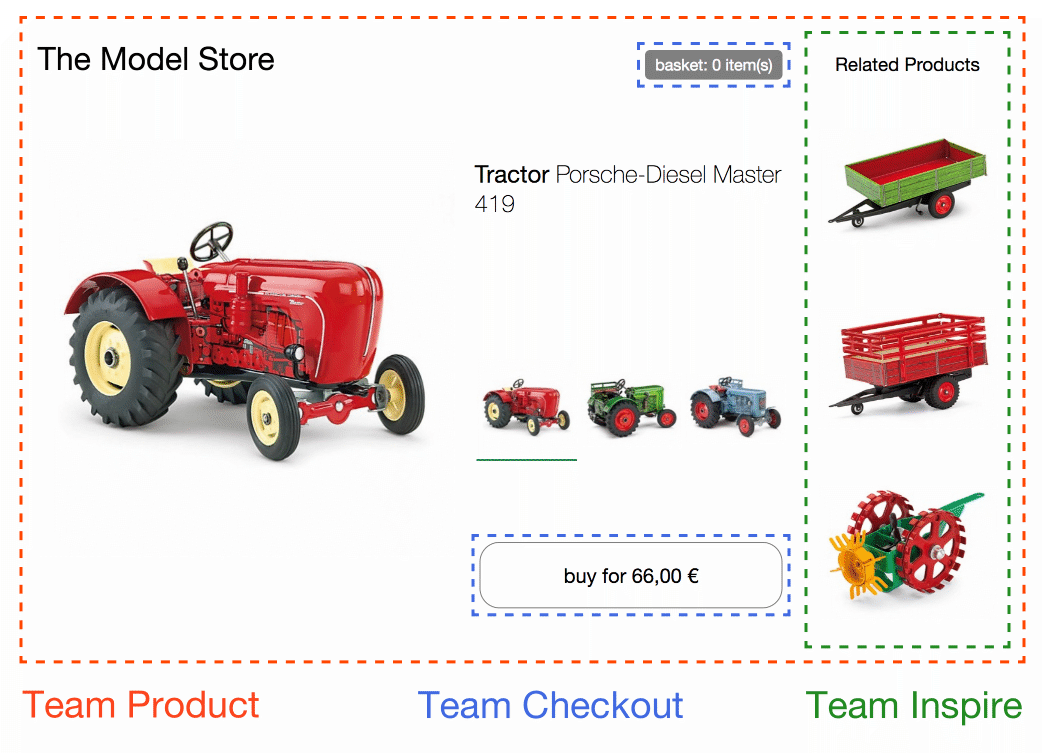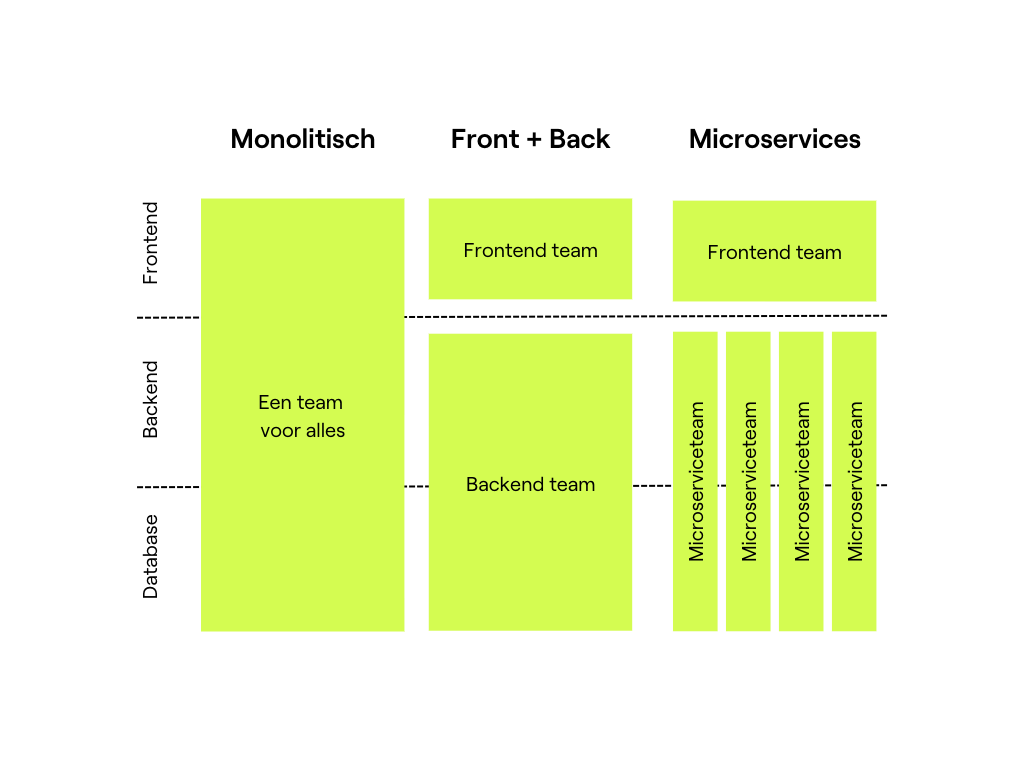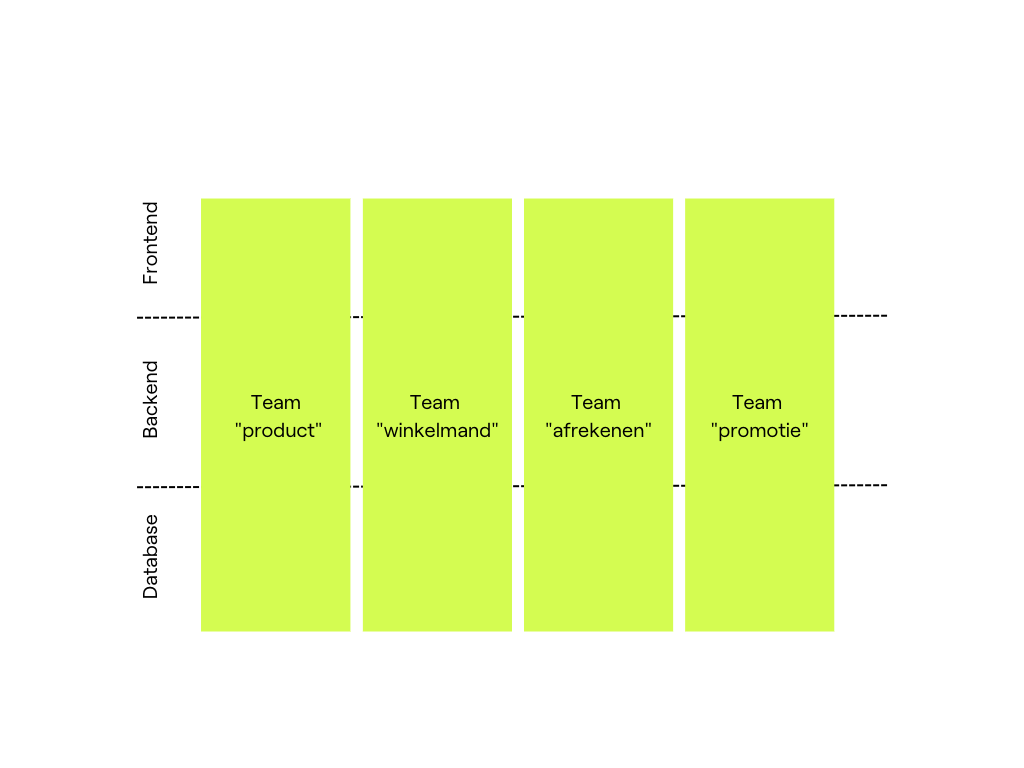The advantages of micro-frontends
By using microfrontend architecture, teams can work efficiently and improve the scalability and maintainability of their application. This article tells you everything you need to know about this approach.


Enter the conversation with Koen!
Frontend is an umbrella term for all the code that makes the software functionally visual and interactive. Backend, in particular, is the technical skeleton and database of the software. Frontend comprises the 'interface' of the software. When you hear the term micro-frontend, you think of small piece of frontend. Does micro-frontend mean that the frontend becomes smaller or different? No. Microfrontend has the same end result, but a different approach. This is because the entire software is broken down into small bite-sized chunks of functionality, or 'microservices'. These services represent a specific purpose the end user has in the software, such as checkout or search. Microfrontends are thus small 'blocks' that can represent and enable this service in the software. Putting these blocks together creates a complete platform. For example, take a look at this page:

This is a product page, as we often see it. Such a page consists of a collection of functionalities that are also found in other places in the software. To set up the software more efficiently, we can split this into micro-frontends. In this way, a frontend developer does not have to work out the entire page, but the page 'arises' automatically by merging the micro-frontends, as shown below:

Microfrontends' concept is to think of a website or web application as a combination of individual features created by separate teams. Each team has its own domain in which it specialises, and with specialised knowledge and expertise, they develop their components from database to user interface.
Organisation
The introduction of microservices has brought incredible benefits, as teams can scale the deployment and maintenance of individual services. Yet previously, this was often limited only to the backend. Many apps with microservices remain linked to a monolithic front-end. As a result, the software is still a huge browser application intertwined with separate back-end services. This makes it impossible to make the most of the benefits of microservices. Traditional organisation of software development looks like this:

With the introduction of micro-frontends, this is changing. By extending disaggregation of microservices to the frontend, it is possible to build teams that are fully responsible for a service/function/customer target from end-to-end, as you can see below:

Benefits
Microfrontends offer several advantages for software development teams over traditional approaches:
- Faster development: micro-frontends allow teams to work simultaneously and quickly on individual components. This allows developers to focus on a particular part of the software without having to understand all the other parts.
- Better scalability: micro-frontends can easily scale up or down as needed, allowing teams to optimise their development processes for maximum efficiency.
- Greater flexibility: micro frontends offer more flexibility when implementing new features and making changes to existing ones, as micro frontend blocks are completely isolated from each other.
- Easier maintenance: microfrontends make it easier for developers to maintain an application by isolating different pieces of code.
- Faster go live and deployment: because different parts of an application can be released independently, it is faster and easier to deploy.
Customer-oriented and modular
Microfrontends are especially suitable for customer-centric businesses because they provide a better user experience. This is because teams are completely focused on making it as good and easy as possible to achieve user and/or customer goals. This fits extremely well with a customer-centered organisational structure. To improve microservices and best serve customer goals, it is advisable to set up a feedback loop for each function. Based on the Customer Effort Score, it is quickly apparent whether the microfrontends connect with the user.
Moreover, the method of micro-frontends suits a modular approach. Each individual service can be set up as a separate module. This ensures that micro-frontends can be composed and deployed independently. This allows teams to quickly roll out new features or make changes to existing ones, while leaving the other micro-frontends untouched.
All in all, micro frontends offer a great solution for software development teams looking to streamline their processes and create scalability. By breaking down the application into smaller pieces, teams can focus on individual components. This leads to faster deployments, more flexibility in implementing features, easier codebase maintenance and better scalability when needed. Because microfrontends offer so many advantages over traditional approaches, it is no wonder they are becoming increasingly popular among developers.

